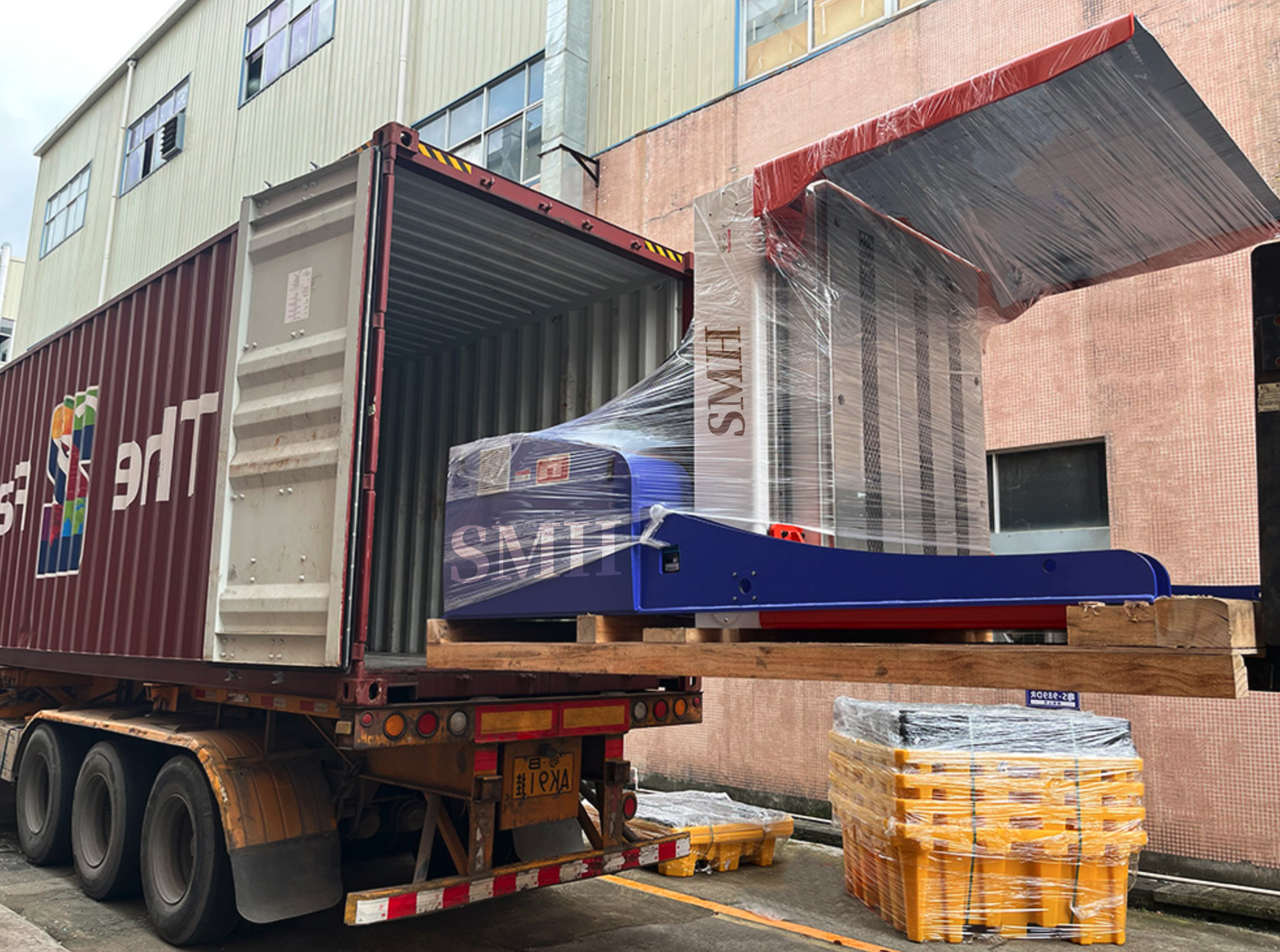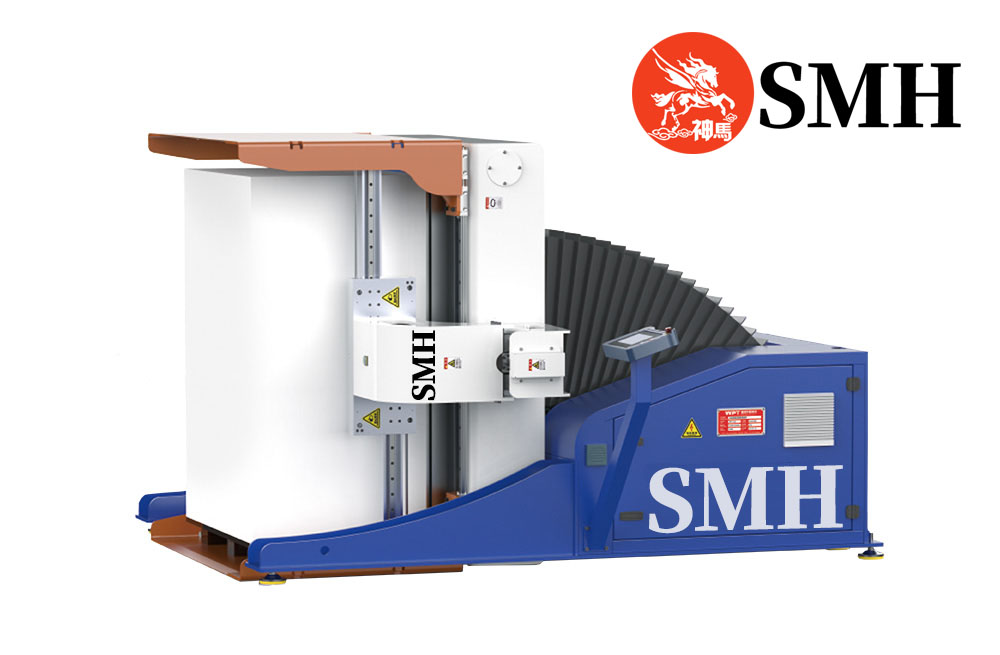The pile turner that our customer ordered is now loaded into the container and ready to be shipped to Australia.


Pile Turner Machine that helps with handling big stacks of paper, cardboard, or other materials in the printing and paper industries. It makes the process of turning, aligning, airing out, and jogging these stacks easier so they’re ready for things like printing, cutting, laminating, or other finishing steps. Here’s a simple overview based on what’s happening in the industry today:
What Does a Pile Turner Do?
Pile turners do a bunch of things to make material handling faster, safer, and better quality:
- Turning: It flips stacks 180° so you can print on both sides or switch pallets (like from wooden ones to system pallets). This happens either hydraulically or electrically by lifting and flipping the stack.
- Airing/Aeration: It blows air between the sheets to separate them, which gets rid of dust, fibers, spray powder, or odors. It also reduces static electricity, which stops sheets from sticking together and improves print quality.
- Aligning/Jogging: It shakes and lines up the edges of the stack against a guide to make sure everything is even. This is super important for precise printing or cutting.
- Drying and Conditioning: It speeds up drying for ink or varnish and conditions the stack so there aren’t issues like ink smudging or sheets sticking together.
- Pallet Exchange: It lets you swap out pallets (like if one is damaged) so automated production lines keep running smoothly.
- Static Removal: Some models have ionized air systems that reduce static, especially useful for coated paper or plastic foils.
Types of Pile Turners
- Manual: You need to turn the table yourself, but it has help with lifting either hydraulically or electrically. The operator controls each step individually.
- Semi-Automatic: This does the turning automatically and has programmable airing and jogging, which saves time. You can control it with just one button, like a “Safeball.”
- Fully Automatic: This does everything—turning, airing, and jogging—all by itself without needing someone there. It’s often part of a bigger production line and has safety features like fences and sensors.
Mobile vs. Stationary: Mobile ones are great for smaller spaces, while stationary ones fit into production lines for high-volume jobs.
Additional Features: Touchscreen controls, settings you can program, air joggers, vibration systems, and optional ionized air for static control.
Benefits
- Efficiency: It automates tasks that would take a lot of manual labor, making production faster.
- Quality: It improves print quality by cleaning sheets, lining them up, and stacking them evenly.
- Safety: It cuts down on physical strain and has safety features like fences and sensors.
- Cost Savings: It lowers labor costs and downtime caused by misfeeds or defective sheets.
- Versatility: It works with different materials (paper, cardboard, foils, thin metals) and fits into production lines.
Applications
Pile turners are used in lots of places:
- Printing Industry: They get stacks ready for offset or digital printing by aligning and airing out sheets.
- Packaging Industry: They handle cardboard or corrugated board for cutting and laminating.
- Paper Mills: They manage large stacks for processing or switching pallets.
- Specialized Industries: They turn cheese stacks for even drainage or handle plastic foils.
Leading Manufacturers
SHM makes automatic pile turners with cool features like multi-channel blowers and touchscreen interfaces.
- SHM-127A: Fully automatic, handles sheets up to 1270 x 870 mm, and has dust removal and odor neutralization.
Considerations for Purchase
- New vs. Used: New machines come with advanced automation and warranties, while used ones (like from Machineseeker or CES) are cheaper but might not have modern features.
- Customization: A lot of manufacturers will tailor solutions to fit your specific needs.
- Installation: Most pile turners don’t need much space or complex setup.
